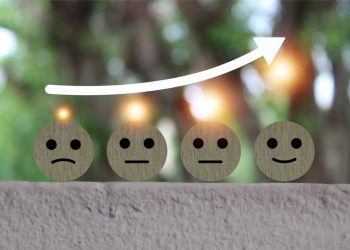RISMEDIA, February 17, 2009-(MCT)-At a time when the retail industry is experiencing an unprecedented number of bankruptcies, there’s one related business that’s undergoing a boom.
Liquidators, the label given to companies appointed to help sell off a struggling retailer’s assets, are busier than ever, given the rough time merchants have had in 2008.
Circuit City, K-B Toys, Linens n’ Things and Expo Design Centers, a spinoff of Home Depot, are among the more notable companies rushing to sell off their inventories.
But do consumers really get deals at these fire sales?
Retail experts say the liquidator’s job is to make a profit. That means shoppers often don’t realize the prices they’re paying at liquidations may not be the best bargains when compared with some ordinary store sales.
Liquidators do the job for a percentage of profits from the sale, giving them incentive to get the highest price, said Jim Peko, who specializes in working with troubled, under-performing and bankrupt entities for Grant Thornton, a provider of accounting and financial services.
Or, more commonly, he said, they take a fee for managing the liquidation while guaranteeing the bankrupt company a certain return.
“It’s a rather unusual time in that liquidators are competing with the sale prices of solvent retailers,” Peko said. “It’s been very difficult all around because there’s so much excess inventory out there.”
That means consumers will have to play a cat-and-mouse game with pricing. Be the first at a liquidation sale and you’ll get your pick of inventory, but only 10 or 20% off. Wait for prices to hit 70% off and risk not getting what you want.
Still, Peko said, there are still good buys to be had.
“If you have the money to spend in this environment, you’ll find great bargains,” he said.
Another tip: “If you spot something at a liquidation and it’s still too high, keep coming back and checking the price,” said Scott Carpenter, executive vice president and director of retail operations for Los Angeles-based Great American Group, which is overseeing liquidations at Circuit City, K-B Toys, Jo-Ann Fabric & Crafts and Pier 1 Imports, among other companies. “Just know that it could be gone if you wait too long and it’s not going to be replenished.”
At Circuit City, he said, the first items to fly out the door during the start of the liquidation sales were iPods, which are rarely discounted but were selling for 10% off.
The sales that started Tuesday at Expo and Yardbirds stores are being managed by liquidation company Gordon Brothers, said Kathryn Gallagher, a spokeswoman for The Home Depot, the parent company. The stores are slated to close by the end of April, but will continue to be managed by Expo during the liquidation, which continues through March.
“The prices of course will go down as time goes by,” said Gallagher, with markdowns scheduled between now and the end of the liquidation.
Experts say January and February are traditionally the time when struggling stores give up, after their last-ditch effort to raise sales during the holiday season. Typically, companies file for Chapter 11 to attempt reorganization first before taking the next step of closing stores and liquidating assets.
Retailers generally are not set up to do their own liquidation sales and hire specialists to conduct them, Peko said. “Time is of the essence in a liquidation, and everything must be done in eight to 15 weeks’ time,” he said. “Retailers are continuing to pay rent and employees at those stores, and that eats away at whatever assets they have left.”
The onslaught of bankruptcies has surprised even veterans in the field.
“Every time we turn around, there’s another liquidation coming our way,” said Carpenter, whose company, one of the largest liquidators in the country, has been in existence for 35 years. Business has “easily doubled” since last year, he said, adding that he has not seen this volume of liquidations since he started with the company 12 years ago.
“There’s no question we’ve had to adjust our historical model,” he said, referring to the high number of failed retailers, the rise in discount-obsessed consumers, and the competitive prices offered by nearly every store.
“There will be nothing left if we do our job right,” said Carpenter.
Tips for Shopping Liquidation Sales
- 1. Don’t assume it’s a deal. Compare prices with other retailers, both locally and online, before you buy. Prices at liquidation sales are not always the lowest you can find, especially at the beginning.
2. Verify before you buy. Check the product thoroughly. Open the box. Look for damage. Verify the presence of all parts, accessories, instructions, warranty information and other items that should be included.
3. Use a credit card. That will give you an opportunity to contest the charge if the item is broken, there are missing components or you encounter other problems.
4. Remember, all sales are final.
Source: Consumer Reports Money & Shopping Blog
© 2009, San Jose Mercury News (San Jose, Calif.).
Distributed by McClatchy-Tribune Information Services.










